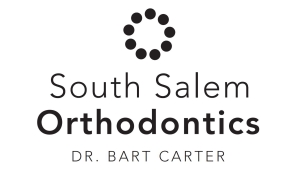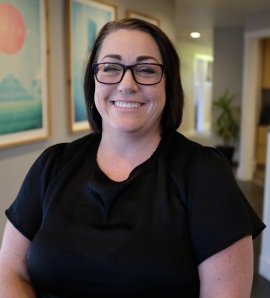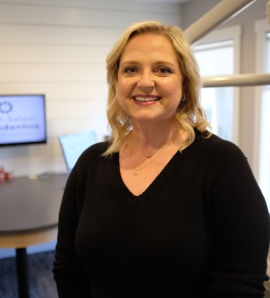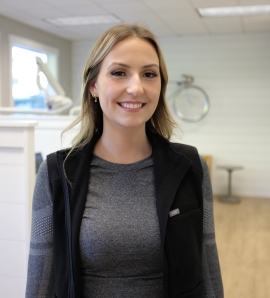Your friendly neighborhood orthodontist!
Dr. Bart Carter and his team at South Salem Orthodontics are passionate about helping you achieve a healthy, beautiful smile in a friendly, timely, and caring manner. We offer a wide range of treatments, including traditional braces, Invisalign clear aligners, retainers and more. You provide the teeth, we’ll create the smile. Contact us today to schedule your complimentary consultation!
Our office conveniently located on Liberty Street South very near downtown Salem, Oregon. See you soon.
Treatment Options
Ways We Can Perfect Your Smile
Why Orthodontics?
At South Salem Orthodontics, we care about getting you a straighter smile.
- Straight teeth not only look good, but are also important for effective biting, chewing, and speaking. Straight teeth are easier to keep clean, thereby increasing not only dental health, but also overall physical health.
- Orthodontic problems usually get worse. Teeth that are out of alignment can contribute to poor aesthetics and improper facial development.
- The beauty of straight teeth will bring self-confidence and contribute to self-esteem in all areas of life; with family, with friends, at work, and at school.
Malaligned teeth can be more prone to trauma, dental decay, gum disease, and excess wear. In some cases, TMJ or jaw pain may be caused by poorly positioned teeth.
Stories That Make Us Smile
Got my braces yesterday and the dr and staff are amazing! Super thorough and explains everything while doing it. 10/10 recommend them!
Posted on 
Alissa Whitney
15. February, 2025.
Nothing but the best. The whole family has had their teeth straightened here. Dr Carter has continued the reputation of excellence that Dr Kaplan built. Thumbs up for a staff that can put up with me.
Posted on 
Joshua Brown
15. February, 2025.
Staff are absolutely AMAZING! From the care in planning and the in-between support, truly is 5star! They always go above and beyond! I have an 1hr commute to have my kiddos seen by them and wouldn’t change to anyone else!!!
Posted on 
Jeanne Joya
15. February, 2025.
Dr. Carter and the staff are amazing. I can’t say enough good things about everyone and his practice. Nicest people ever. Did phenomenal work on my train wreck teeth. I recommend him to everyone.
Posted on 
Stephen Hash
15. February, 2025.
I can’t say enough good things about Dr. Carter and his team!! Everyone I interacted with was always so kind and professional!! My teeth look amazing, Dr. Carter did wonders with my stubborn teeth!!
Posted on 
Nancy Ziehl
15. February, 2025.
The staff and doctor are all great. What really shows what a good place this is is the fact that after years of monitoring my son, Dr. Carter said he didn’t think there is a need for braces. So honest, so kind. I definitely recommend them!
Posted on 
Shanan Woods
15. February, 2025.
What an amazing office from the moment you walk in the door! Dr. Carter was very thorough in his consultation appointment as well as when braces were placed on my daughter. Every staff member was knowledgeable and very personable. We left with great confidence with Dr. Carter and his team. I would highly recommend South Salem Orthodontics to anyone.
Posted on 
April Urquhart
15. February, 2025.
My daughter and I had an amazing experience. We were welcomed warmly. The process was quick, easy and enjoyable. Amazing staff and clean office.
Posted on 
Brittany Taylor
15. February, 2025.
Dr Carter and team are always amazing. They are so patient with me, and my assistant helped me through my dental anxiety today. (Even being a former dental assistant myself) the office always kindly greets me and has treated me and my family so wonderfully, I wouldn’t go anywhere else.
Posted on 
Kayla
15. February, 2025.
I can’t recommend this orthodontist more. Dr.Carter, Amy and the rest of the staff here treat my kiddo (and me) so well. We are so grateful for their care and transparency about my son’s orthodontic needs.
Posted on 
Vanessa Burbank
15. February, 2025.
Once the process was over, I felt like Dr. Carter and staff were consummate professionals and I knew beyond a shadow of doubt they cared how my teeth would look years down the road. If I had to do the process all over again, I would choose Dr. Carter and his staff to give me another wonderful smile!
Posted on 
Sam Wise
15. February, 2025.
Adults,
it’s not too late!
Orthodontists aren’t just for children and teenagers, they are for adults too! Dr. Carter sees many adults at South Salem Orthodontics. Schedule your appointment today!
Dr. Bart Carter
Orthodontist
Aimee Hess
Office Manager
Jessi Mattison
Treatment Coordinator
Mckayla Myronenko
Orthodontic Assistant
Contact Info
Begin Your Journey!
Salem Office
1790 Liberty St. SE Salem, OR 97302
Call Us
503-588-2404
Office Hours
Monday - Thursday: 8:00am - 5:00pm






